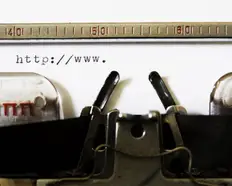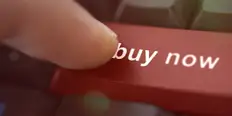Converse com a Ava - Sua Consultora AI de Negócios
Olá, eu sou a Ava, seu guia de IA para turbinar seus negócios!
Se você já está a frente de um negócio ou sonha em começar um, estou aqui para te ajudar a transformar suas ideias em realidade usando freelancers com a ajuda de tecnologia de IA. Compartilhe seus objetivos de negócio e, juntos, criaremos um projeto pelo qual nossos talentosos freelancers possam concorrer. Vamos transformar suas ideias em realidade!
Eu tenho um negócio
Estou começando um negócio
Algo deu errado ao enviar a conversa para o seu e-mail. Por favor, tente novamente mais tarde.
Você só pode salvar sua conversa uma vez por hora. Por favor, tente novamente mais tarde.
Sua conversa é muito curta. Continue conversando com a Ava para permitir o salvamento.
How to write a call to action that gets results
Your call to action (CTA) is your primary selling point, but few know how to leverage their potential. Learn how to get it right and get results.
11 de jun. de 2019 • 6 minuto lido
Atualizado em 21 de jan. de 2020 por Adam S.

Content Manager at Freelancer.com
Não foi possível copiar para a área de transferência, por favor, tente novamente após ajustar suas permissões.
Copiado para a área de transferência.

10 tips to write the perfect CTA that'll have your customers clicking like crazy
Your website and marketing materials have one goal: sales. That means you need to inspire your customers to take action. All your other marketing copy builds towards the single goal of this call to action. But no matter how brilliant your marketing copy is, if you flub your call to action you won't close the deal.
What is a call to action?
A call to action, usually abbreviated as CTA, is just what it sounds like: it's messaging that asks your customers to take a specific action. It could be buying your product. It could be signing up to your newsletter. Any copy that asks your customers to do something specific is a call to action. And the way you phrase a CTA makes a massive difference to your success.
Why do I need them?
Alarmingly, 70% of small business websites lack a CTA . It's clear that many small businesspeople don't understand the benefit of a call to action.
A CTA tells your customers what you want them to do. Without a CTA, you're leaving your customers in the dark. Providing them a clear CTA motivates them to take the next step down your sales funnel.
With that in mind, here are our top 10 tips for crafting a perfect CTA.
1. Be action oriented
A good CTA uses action verbs. It commands the audience to take a specific step. Your CTA isn't the time to play coy. Use strong verbs to motivate.
If you're offering something in exchange for an email signup (a free e-book , for example), you'll want to use verbs like "get" or "download." If you're asking customers to buy something, you might use a phrase as straightforward as "add to cart."
Whatever step you're asking your customer to take, make sure you use a powerful, action-oriented verb to motivate them.
2. Be clear about what you're offering
Tell customers exactly what they'll get by clicking on your call to action. One of the most ironclad rules in marketing is to lead with benefits. Tell customers what benefit they'll get from clicking on your CTA. For example, if you're offering a free e-book on content marketing, you might use a CTA that says, "Start learning the secrets of content marketing pros today."
Freelance Freelance Writing Experts


Copywriting
Legal
Internet Marketing
SEO
Research


Copywriting
Translation
Research
Proofreading
Blog


PHP
Website Design
Graphic Design
Copywriting
Internet Marketing


Copywriting
SEO
Blog
Technical Writing
Ghostwriting
Being clear about your offer also means being honest. Don't make promises in your CTA unless you can deliver on them. For example, don't tell customers they'll get overnight shipping on your product if the best you can do is standard post. Tell your customers what they'll get and then deliver on it.
3. Minimize risk
Minimizing risk overcomes powerful psychological hurdles to your CTA. You're asking customers to part with either their hard-earned money or their private data. That's a big request. You can remove the friction to this by reducing the sense of risk involved.
If you're selling a product, your CTA can minimize risk by offering free shipping, free returns or a money-back guarantee. You could offer a free trial, or free IT support. Any offer that makes the rewards of using your product or service seem to outweigh the risks will make your CTA more effective.
4. Different CTAs for different devices
People visiting your site or viewing your marketing materials on different devices will interact with it in different ways. A visitor on a desktop computer might be perfectly content to fill out a form, while a mobile user wants a more immediate experience. A perfect example of a great mobile CTA is Amazon's "Buy now with 1 click" button. It recognizes that users don't want to go through the hassle of filling out order forms, particularly on mobile devices.
Mobile users are generally more highly motivated, and are seeking more immediate gratification. Your CTA can leverage this by prompting them to buy or even to call for more information.
Fortunately, Google Adwords lets you segment your CTAs by device. You can also add a button to mobile searches that lets users click to call your business.
5. Keep it simple
There's no hard and fast rule for the proper word count in a call to action, but in general, you'll want to be brief and to the point. You should be able to motivate your customers in no more than a couple sentences, and if you're writing the copy for a CTA button you'll want to keep it to around five words.
Keeping your CTA simple also means keeping it understandable. Steer away from any industry jargon or complicated terms. Be concise and write in approachable, conversational language.
6. Leverage FOMO
Creating scarcity makes your CTA more enticing . Use a customer's natural fear of missing out to your advantage and write your CTA to appeal to this.
You can create scarcity in a couple of ways. You can offer a discount for a limited time (or to a limited number of users), you can talk about limited supply of your product or you can give your product an air of exclusivity by only offering something for select users (for example, only premium subscribers get access to a certain service or discount).
7. Use numbers in your CTA
Using numbers in your CTA gives your customers something tangible to hold onto. You can use numbers to minimize risk. For example, you can offer a 30-day free return policy, or 24 hour customer support. You can use numbers to create scarcity or exclusivity. An example of this might be offering 40% off for premium subscribers, or advertising a 3-day sale. You can also use numbers as social proof. For instance, you might talk about your 25 years of experience, your 1 million satisfied customers or your 5-star Yelp rating. Just be sure that if you do use numbers, you can back them up.
8. Make it emotional
Your CTA should appeal to your customers' emotions. It should give them hope that your product or service will make their life better.
Keep in mind that buying decisions are emotional decisions. Few people pay for products or services as an end in and of themselves. They're looking for that product or service to meet an emotional need. For example, users sign up for Netflix because they want to be entertained, excited and engaged, and because they don't want to miss out on pop culture that their peers are consuming. People buy from Amazon because they crave ease and convenience. These are emotional needs, not practical needs.
Your CTA should appeal to the underlying emotional need your product or service caters to. Paint a picture for your customers of how their life will be better by taking action. Will they learn something? Will they reduce their stress? Will they improve their health or self image? Sell your customers a better version of themselves.
9. Focus on the customer
Your CTA should be customer-centric rather than brand-centric. Don't phrase your CTA to talk about yourself or your company. Phrase it to talk about the customer. Tell them what they'll get and how they'll benefit. Don't ask them to "Download our free e-book." Tell them to "Download your free e-book."
10. Make your CTA obvious
Don't make customers hunt around for your call to action. Display it prominently on your website and in your marketing materials. There's plenty of research about the best placement for CTAs , and different products and services seem to get results from different placements.
Regardless of where you place your CTA, whether it's above the fold on your landing page, at the bottom or somewhere in between, it needs to be prominent and obvious. You also want to shy away from including too many CTAs on a single page, as this can cause confusion for your customers.
Bonus Tip: Hire a professional
Your CTA is the most important part of your marketing materials. A lot of skill goes into crafting an effective CTA, placing it properly, designing it to be eye-catching and testing it to ensure it's working. If this all sounds overwhelming, you might consider hiring a freelance writer to help you craft the messaging of your CTA. You can find an expert in creating marketing copy with proven results, and writing CTAs that drive sales.
Freelance Freelance Writing Experts


Proofreading
WordPress
Powerpoint
Editing
Freelance


Proofreading
Technical Writing
Editing
Word
Article Rewriting


Copywriting
Internet Marketing
Research
Proofreading
Blog


Copywriting
Research
Proofreading
Blog
Editing
Diga-nos o que você precisa que seja feito
Digite o nome do seu projeto
Histórias Relacionadas
Fale com um de nossos Co-pilotos Técnicos para que ele possa te ajudar no seu projeto
Artigos Recomendados Somente para Você

Need to write content for your website? Follow our guide to make sure it's optimized to rank on the first page of Google
20 min read

Struggling to come up with the best idea? Our exhaustive guide runs through the idea generation process to help you tap into your inner Steve Jobs.
10 min read

Effective social media marketing is crucial your brand. Learn how to hire a social media expert to bring you maximum results for minimum investment
10 min read

You can hire a programmer to solve just about any complex problem, the problem is knowing how to hire the right professional for the job. Learn how..
13 min read
Obrigado! Te enviamos um link por e-mail para que você possa reivindicar seu crédito gratuito.
Algo deu errado ao enviar seu e-mail. Por favor, tente novamente.
Carregando pré-visualização
Permissão concedida para Geolocalização.
Sua sessão expirou e você foi desconectado. Por favor, faça login novamente.




